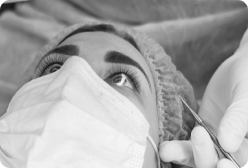What is Cataract?
When proteins present in the eye, form clumps, it muddles your vision with a cloudy, hazy outline. This
interference can cause clouding of the lens of your eyes. If left untreated, cataracts could lead to total blindness.
The symptoms of cataracts are prominent when you’re between the age of 50–60. If you experience blurry
vision or any vision-related problems, our experts can guide you through Advanced Cataract Surgeries.











